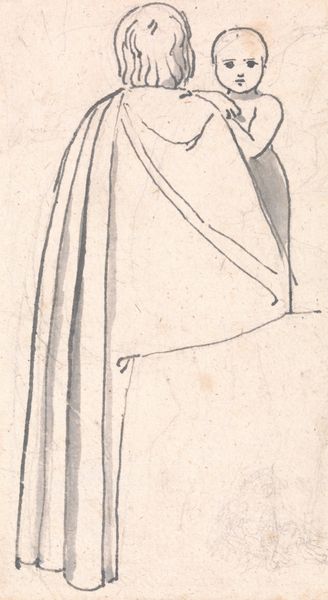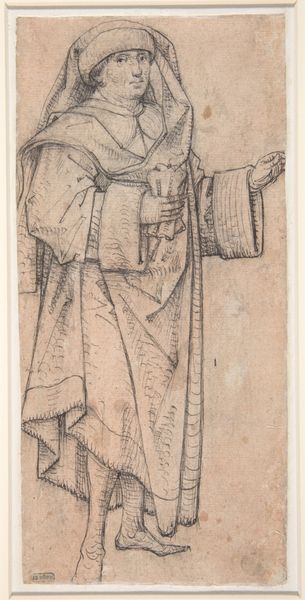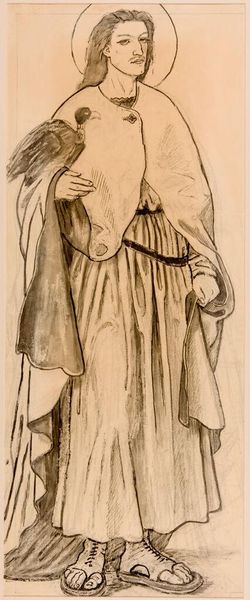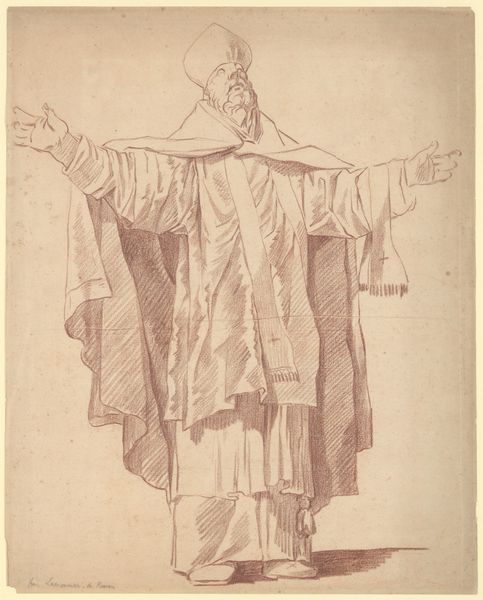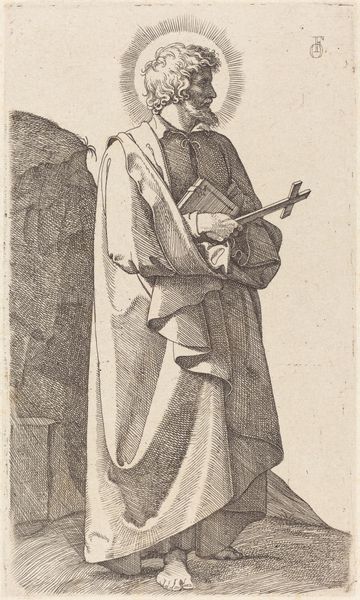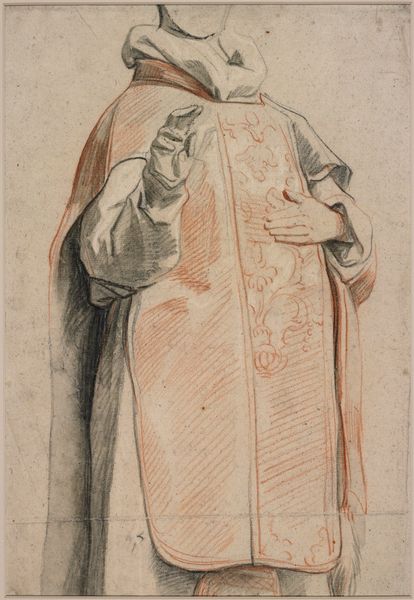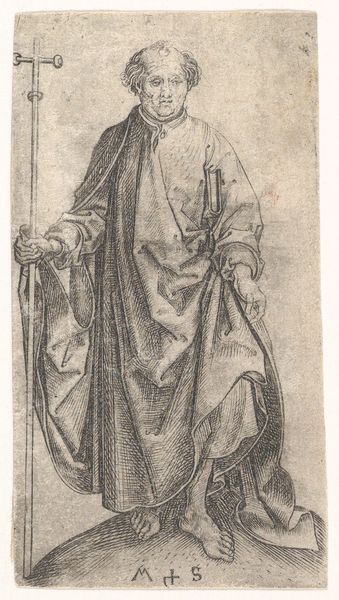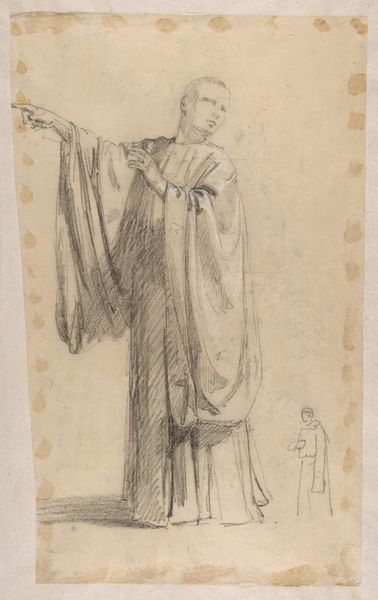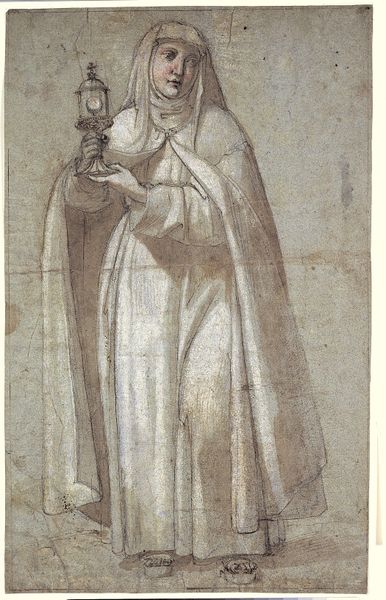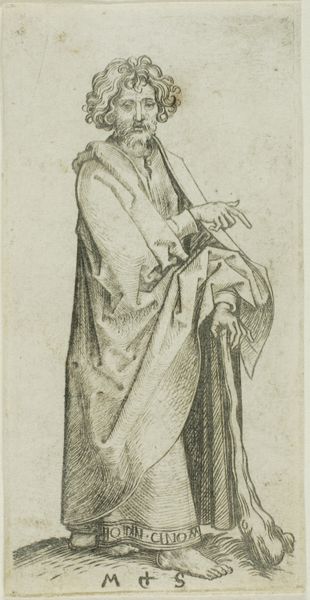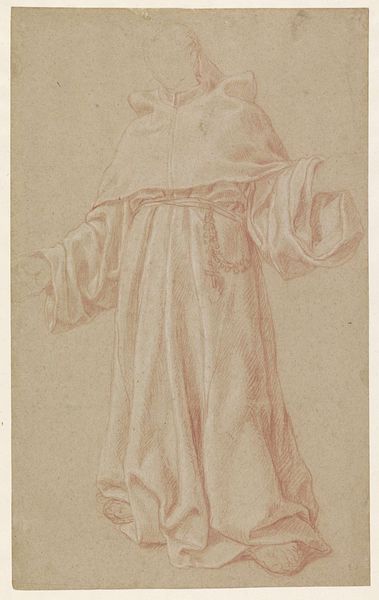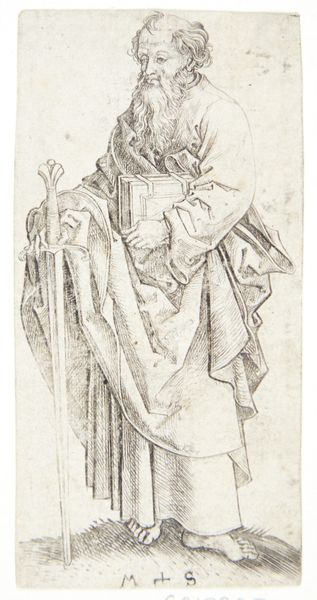
Voorstudie voor de Eerste Bossche Wand: Keizer Frederik Barbarossa 1869 - 1925
0:00
0:00
drawing, tempera, ink
#
portrait
#
drawing
#
narrative-art
#
tempera
#
study drawing
#
figuration
#
personal sketchbook
#
ink
#
symbolism
#
history-painting
#
academic-art
Dimensions: height 395 mm, width 296 mm
Copyright: Rijks Museum: Open Domain
Curator: We’re looking at "Preliminary Study for the First Wall of 's-Hertogenbosch: Emperor Frederick Barbarossa" by Antoon Derkinderen. This study, likely created between 1869 and 1925, uses ink and tempera. Derkinderen was deeply involved in the Dutch Symbolist movement, and he received formal academic training which enabled him to produce several of these stunning sketches that preceded many wall decorations for public buildings. Editor: Okay, wow. My first impression is… regal absence? Like a ghost emperor. It's just lines and shapes, suggesting power without actually showing it. Gives me a slight chill. Curator: Absolutely. Derkinderen situates Frederick Barbarossa within the historical narratives that were formative in solidifying nation-state ideology in the Netherlands during that period. The choice of Barbarossa—Holy Roman Emperor—connects to broader dialogues around authority, law, and imperial legacy, which became deeply intertwined with art and its purpose during the Dutch cultural revival. How does the sketch resonate with you beyond its initial mood? Editor: There's something very deliberate about the incompleteness. We see this towering figure in full regalia, almost like an architectural drawing—stark and imposing but lacking… warmth. Almost devoid of any expression which is appropriate given his notorious cruelty. It invites the viewer to consider what it must feel to command an empire, a lot of open space to fill but also, great distance from others, or even one's own self. Curator: I agree completely. The technique mirrors that of preliminary academic figure studies but goes deeper into the relationship between public image and individual experience. By depriving the emperor of any subjective presence, the artwork interrogates how a historical persona morphs when pressed into serving collective memory or social cohesion. Derkinderen’s art serves both the revival of painting practices, while making very complex points about class structures in Dutch society. Editor: Makes you think about all the empty costumes of power we still create and idolize today, right? This piece speaks across centuries with frightening acuity. It could be ripped from any moment in history, just needs a bit of adjustment to the cut of the dress. It's an intriguing reflection on enduring human obsessions with authority. Curator: Indeed. It invites us to reflect on our own contemporary understanding of political leadership. Thank you for this insightful engagement, as always. Editor: Always a pleasure. Let's continue exploring the layers of stories hidden in art, shall we?
Comments
No comments
Be the first to comment and join the conversation on the ultimate creative platform.
